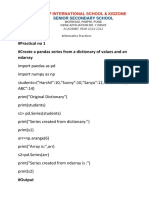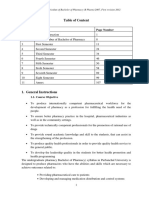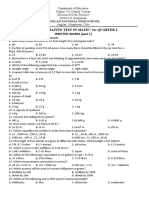0% found this document useful (0 votes)
69 views2 pagesData Analysis CheatSheet
This cheat sheet provides essential commands and techniques for data analysis and visualization in Python using libraries like NumPy, Pandas, Matplotlib, and Seaborn. It covers topics such as importing libraries, creating and manipulating arrays and DataFrames, handling missing data, plotting, merging data, and file handling. Additionally, it includes examples of statistical operations, data binning, and removing duplicates.
Uploaded by
Aditya singh RajputCopyright
© © All Rights Reserved
We take content rights seriously. If you suspect this is your content, claim it here.
Available Formats
Download as DOCX, PDF, TXT or read online on Scribd
0% found this document useful (0 votes)
69 views2 pagesData Analysis CheatSheet
This cheat sheet provides essential commands and techniques for data analysis and visualization in Python using libraries like NumPy, Pandas, Matplotlib, and Seaborn. It covers topics such as importing libraries, creating and manipulating arrays and DataFrames, handling missing data, plotting, merging data, and file handling. Additionally, it includes examples of statistical operations, data binning, and removing duplicates.
Uploaded by
Aditya singh RajputCopyright
© © All Rights Reserved
We take content rights seriously. If you suspect this is your content, claim it here.
Available Formats
Download as DOCX, PDF, TXT or read online on Scribd
/ 2




























































































